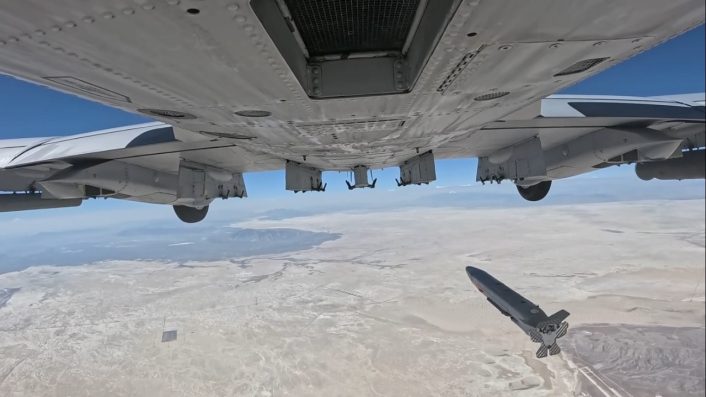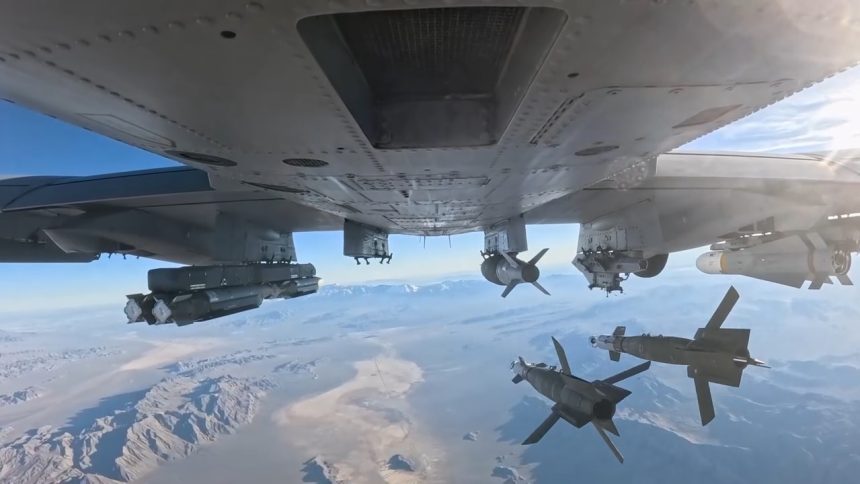The footage was recorded with the OTTER Cam, an innovative exterior camera system developed in-house by the 59th TES and used to support the testing of external stores on the A-10C.
The U.S. Air Force (USAF) has released a series of videos showing routine yet stunning tests of multiple munitions on the A-10C Thunderbolt II at Nellis AFB (Air Force Base), Nevada. The videos, which show tests performed between Mar. 27 and Jun. 11, 2024, were recorded with the new OTTER-CAM (Operational Test & Training Exterior Recording Camera).
Most importantly, the videos are recorded by an in-flight camera developed in-house and attached under the A-10’s belly. The new kit was put together by a flight test engineer for as cheap as $ 700, replacing similar devices made by leading defense companies which cost nearly $ 1 million.
A statement said that the A-10 Division of the 422nd Test and Evaluation Squadron conducted a Force Development Evaluation of the new A-10 Operational Flight Program 12. The evaluation included the employment of all weapons in the A-10C’s inventory to verify software functionality before it is fielded to operational squadrons.
The OTTER Cam
The OTTER Cam is an innovative system developed in-house by First Lt. Jacob Geil, a flight test engineer assigned to the 59th Test and Evaluation Squadron. His work was inspired by the need to create a cost efficient, rapidly manufacturable in-flight camera pod for use on the A-10C, as existing pods come with a nearly one-million-dollar price tag and require a one-year lead time for manufacturing and airworthiness certification.
“We’re unable to integrate new and complex stores on the A-10 without wing or belly-mounted cameras and we don’t have the budget to pay outside organizations for this capability,” said Geil. “With the support of my leadership and the A-10 Systems Program Office, we were able to create a solution that saves the Air Force significant time and money.”
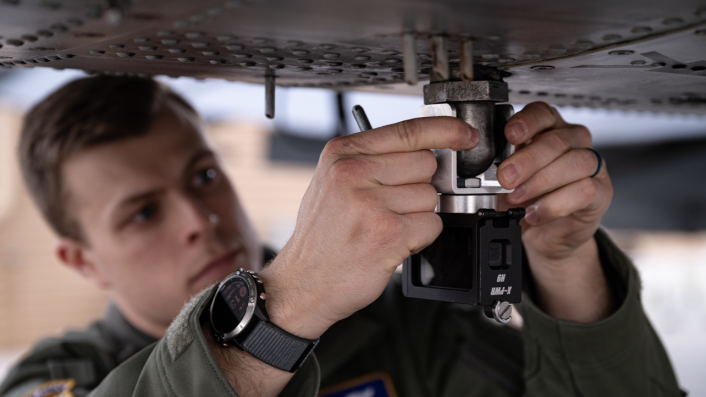
Geil’s OTTER Cam, which costs only a total of $700, was designed, manufactured, and assembled in-house and consists of an action camera, a heavy-duty commercial-off-the-shelf (COTS) housing, and a custom mounting bracket. It can record any one of the eleven A-10C weapons pylons in-flight, providing a crucial capability to ensure safe-separation when testing new stores.
The weapon testing in the videos
The five videos show the multiple ways the A-10C can employ its variegated weapon inventory. The OTTER Cam, installed below the engines, provides a good view of all the pylons used to carry air-to-ground weapons. By the way, all the weapons employed throughout the videos are live, with the only exception being the gun’s 30mm Target Practice (TP) rounds.
In the first video, the A-10 employs four Cluster Bomb Units, 2.75” Hydra rockets, two AGM-65 Mavericks, as well as the 30 mm GAU-8 gun. Specifically, the CBUs appear to be a mix of CBU-87 Combined Effects Munition (CEM) and CBU-103 Wind Corrected Munitions Dispenser (WCMD) bombs, while the Mavericks could be the fire-and-forget AGM-65G Imaging IR (IIR) seeker heavyweight penetrator variants.
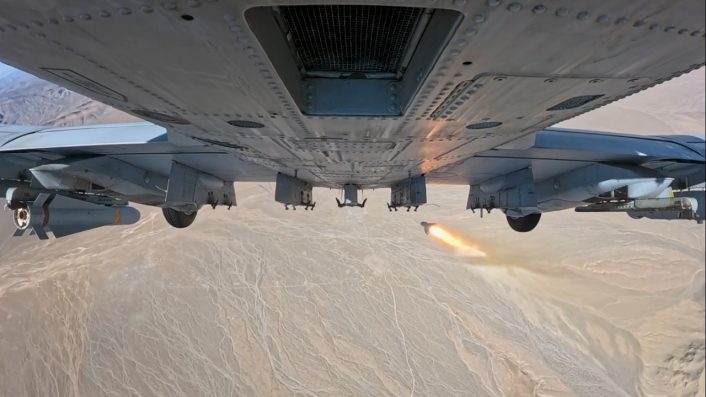
The CBU-87B is an all-purpose, air-delivered cluster weapon system; when used in conjunction with the Wind Corrected Munitions Dispenser (WCMD) guidance tail kit, which includes a GPS, it is designated as CBU-103. CBU-87s have replaced previous Cluster Bombs Units used during the Vietnam War in 1986. It is worth noting that the United States are not among the major powers that have signed the 2010’s Convention on Cluster Munitions to ban use and stockpiling of cluster weapons.
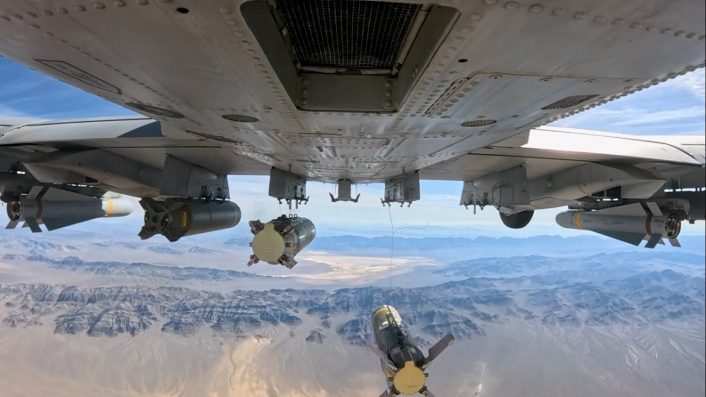
The video also shows the A-10 performing high-angle attacks with the Hydra rockets, as shown by the thin streaks of smoke departing from the wing, and with the legendary GAU-8 Avenger Gatling gun. The high angle at which the attacks are performed also gives the opportunity to see the smoke on the targets after they are struck.
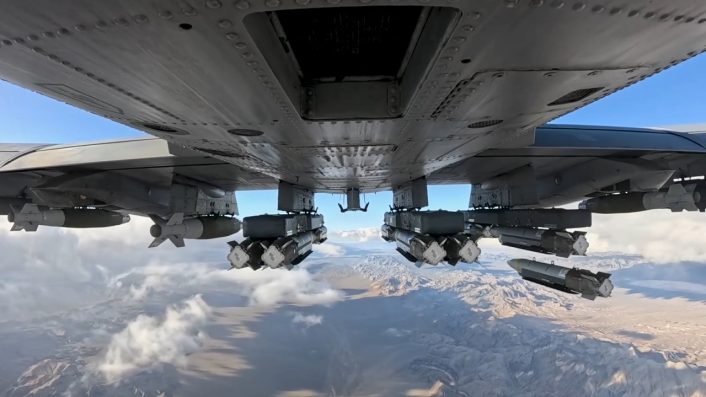
In the second clip, the A-10 is seen carrying three BRU-61 racks with a total of 12 GBU-39 Small Diameter Bombs (SDB), in addition to three GBU-38 Joint Direct Attack Munitions (JDAM). Interestingly, all the weapons are released in groups, with the SDBs released in ripples of six weapons each during two passes and the three JDAMs released all in one pass.
The third and fourth video feature a more variegated loadout, with one AGM-65, three GBU-38s, four GBU-39s and three GBU-12 Paveway II laser-guided bombs, carried on a triple ejector rack instead of the usual single bomb per pylon. In both cases, which show the same payload but with mirrored positions, not all weapons are employed.
Both videos show a mix of single and ripple weapon releases, performed during both low-angle and high-angle attacks with lots of low-altitude flights. Once again, multiple strafing runs, both low- and high-angle, can be seen throughout the video. One is particularly interesting, with the A-10 performing a low-angle strafe run on the first target and quickly kicking the rudder and a bit of ailerons to hit a second target, all in the same pass.
The fifth and last video, which is also the shortest, shows the A-10 loaded only with one ADM-160B Miniature Air Launched Decoy (MALD), which was later released. The MALD is a low-cost, expendable, air-launched, programmable decoy munition that can replicate the flight profiles and signatures of aircraft and weapons, drawing away the attention from them while confusing enemy integrated air defense systems.
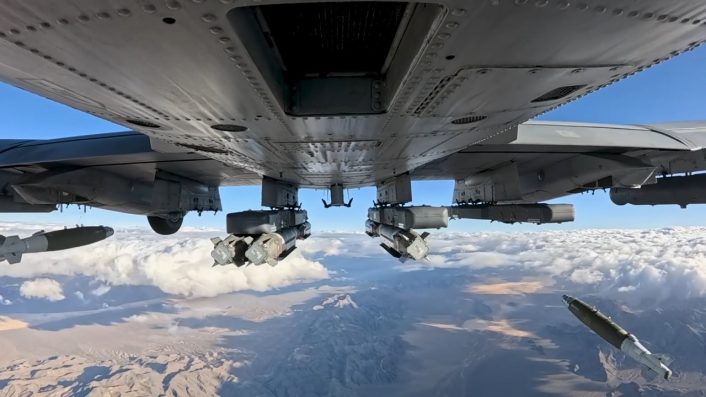
Initially developed in 1995, MALD is intended to stimulate and confuse enemy air defenses during the Suppression of Enemy Air Defenses missions. One of the main components is the Signature Augmentation Subsystem (SAS), which uses radar enhancers to mimic different aircraft while flying a pre-programmed route, with the newer ADM-160C variant also able to jam enemy radars.
In the last few years, the A-10 received the MALD to adapt to the future fights and bolster the pilots’ ability to safely navigate hostile environments. In a 2022 exercise, A-10s equipped with MALD decoys were used to support B-1B Lancer bombers deployed to Guam.
